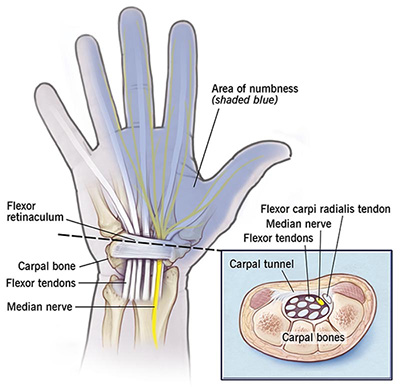Carpal Tunnel Surgery in Iran

Carpal tunnel syndrome, as mentioned, is a condition that causes pain, numbness, tingling, and weakness in the hand and wrist. It happens when the pressure increases within the wrist on a nerve, called the median nerve. This nerve provides sensation to the thumb, index, and middle fingers, and half of the ring finger. The small finger (the “pinky”) is typically not affected.
Carpal tunnel syndrome was first described in the mid-1800s. The first surgery for the carpal tunnel release was done in the 1930s. This condition has been well-recognized by orthopedic surgeons for over 40 years.
What Is Carpal Tunnel?
The carpal tunnel is a narrow canal or tube in the wrist. Similarly to a tunnel, you could travel through by car, this part of the wrist allows the median nerve and tendons to connect the hand and forearm. The parts of this tunnel include:
-
Carpal bones: These bones make up the bottom and sides of the tunnel. They are formed in a semi-circle.
-
Ligament: The top of the tunnel, the ligament is a strong tissue that holds the tunnel together.
Inside the tunnel are the median nerve and tendons.
-
Median nerve: This nerve provides feeling to most of the fingers in the hand (except the little finger). It also adds strength to the base of the thumb and index finger.
-
Tendons: Rope-like structures, tendons connect muscles in the forearm to the bones in the hand. They allow the fingers and thumb to bend.
